Signals and Systems: Unit I: Classification of Signals and Systems,,
Classification of Signals and Systems
Signal, Elementary Signals
Signal is a physical quantity that carries some information and it depends upon one or more independent variable. (Time, spatial co-ordinates, temperature etc., are independent variable)
CLASSIFICATION
OF SIGNALS AND SYSTEMS
SIGNAL
Signal is a physical
quantity that carries some information and it depends upon one or more
independent variable.
(Time, spatial
co-ordinates, temperature etc., are independent variable)
Example
TV signal, radio
signal, speech signal
Classifications
of Signals:
Signals are basically
classified in to two types.
i. Continuous time
signals (CT signals)
ii. Discrete time
signals (DT signals)
Continuous Time Signals: (CT Signals)
Continuous time signal
is defined for all values of time "t" and it is represented by x(t).
Magnitude of CT signal is continuous in the specified range of time.
Discrete Time Signals: (DT Signals)
Discrete time signal is
defined only at regular time interval. It is represented by x (n). Here "n"
denotes discrete interval of time. "n" ranges from - ∞ to +∞.
Example:
Figure 1.1 shows an
example of CT signal and DT signal
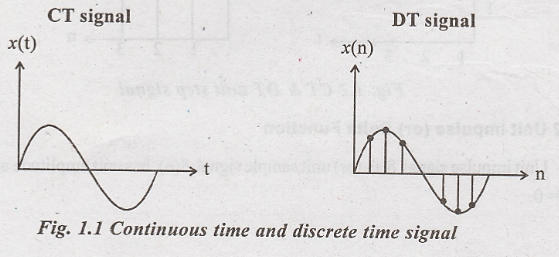
ELEMENTARY
SIGNALS
Elementary (or)
standard signals are used for the analysis of continuous time and discrete time
systems.
Elementary signals are listed as follows.
i. Unit step signal
ii. Unit impulse signal
iii. Unit ramp signal
iv. Sinusoidal signal
v. Exponential signal
Unit Step Signal
i. Unit step signal has
amplitude "1" for the positive values of "t" (or) "n".
ii. Unit step signal
has amplitude "o" for the negative values of "t" or
"n".
Representation:-

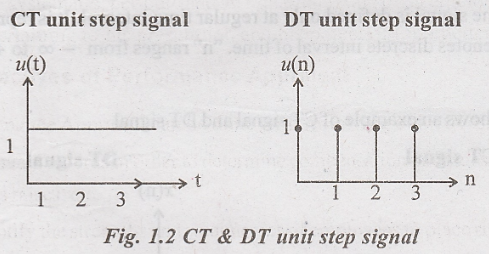
Unit Impulse (or) Delta Function
Unit impulse signal δ(t)
(or) unit sample signal δ(n) has unit amplitude at t = 0 (or) at n = 0.
Representation:

Waveform:
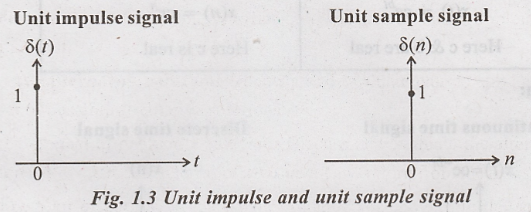
Shifting property of
unit impulse signal

Shifting property of
unit sample signal.

Unit Ramp Signal
Unit ramp signal is
linearly growing function for positive values of "t" (or) positive
values of "n".
Representation

Exponential Signal
Exponential signal is
exponentially growing (or) decaying signal.
Representation:

Waveform:
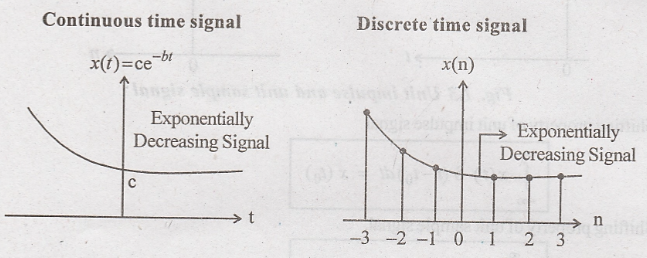

Complex exponential signal
If the exponent of a
signal is imaginary then the signal is known as complex exponential signal.
Continuous time (CT) complex exponential signal

Discrete time (DT) complex exponential signal.

Sinusoidal Signal
Continuous time sinusoidal signal:

Discrete time sinusoidal signal:
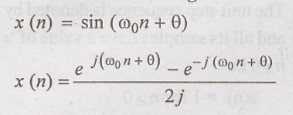
Comparision of continuous and discrete time signal



Signals and Systems: Unit I: Classification of Signals and Systems,, : Tag: : Signal, Elementary Signals - Classification of Signals and Systems
Related Topics
Related Subjects
Signals and Systems
EC3354 - 3rd Semester - ECE Dept - 2021 Regulation | 3rd Semester ECE Dept 2021 Regulation
